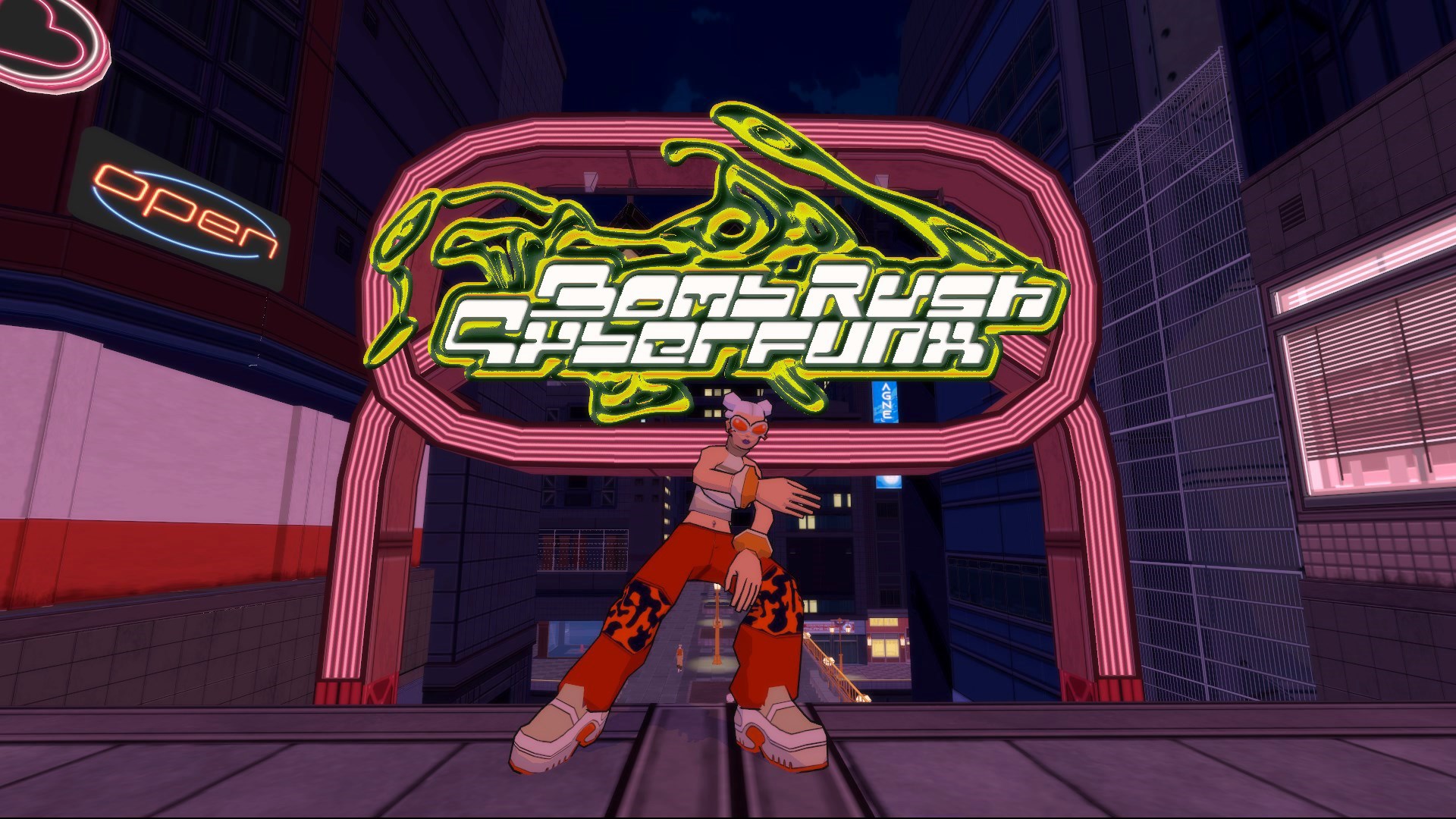After giving Bomb Rush Cyberfunk a "perfect" 5 out of 5 score, with what read like a "first impression," I knew I had to write this as a follow-up when I actually finished the game. The reasons why I gave Bomb Rush Cyberfunk early praise and accolades were simple really. I knew there was no way I could give it a score lower than the highest I'd given it. I also knew that many critics would misunderstand the game and pass it off as just a Jet Set Radio clone.
While I won't reference the review here, I've read opinions on why this game deserves a "middle of the road" score like a six out of ten. For us, that would be three stars out of five. A game I'd give something that I felt wasn't the best but it wasn't exactly the worse. Despite this being more subjective than objective, as most critics are, it's almost a slap in the face to pass it off as a "clone." There are a plethora of "Metroidvania" and "Souls" games for players to enjoy for a lifetime. This isn't even including roguelikes. Every game that is created now was influenced by others before it in some way shape or form.
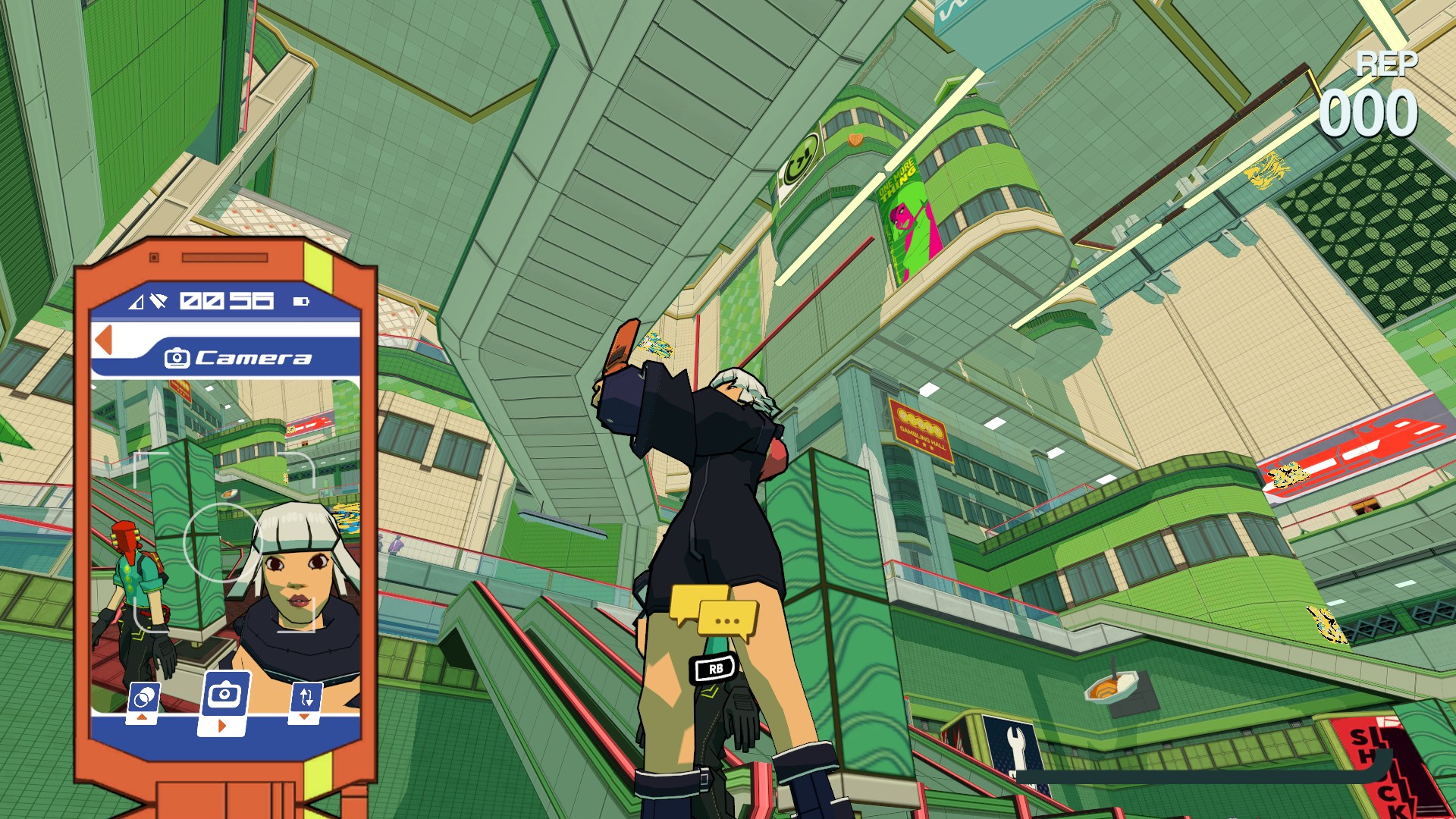
It's obvious that Jet Set Radio remains its primary influence and not just in the game's visual aesthetics. Each of the five boroughs that the player visits while going "All City" reminded me of a Jet Set Radio or Jet Set Radio Future area. Versum Hill is Dogenzaka Hill, Brink Terminal is Shibuya Terminal mixed with the sewer system of Kogane-Cho, and Mataan is a mash-up of every night level from both games. Some levels, like the mall, were an example of Team Reptile doing something completely different. Pyramid Island was also another interesting idea as the concept of taking a ferry to what is essentially "Staten Island" was unique.
The connecting highway paths from the hideout to Mataan, however, felt something completely out of Jet Set Radio. It's no secret that many of these references were homages but there were some instances where sections of a map gave me a case of "deja vu" from Jet Set Radio. Even the ending sequence reminded me of Jet Set Radio Future, despite the twist at the end. While the story isn't Bomb Rush Cyberfunk's highest note, it was intriguing enough for me to get me invested although there were many things I simply found confusing. Due to this, there are endgame story spoilers.
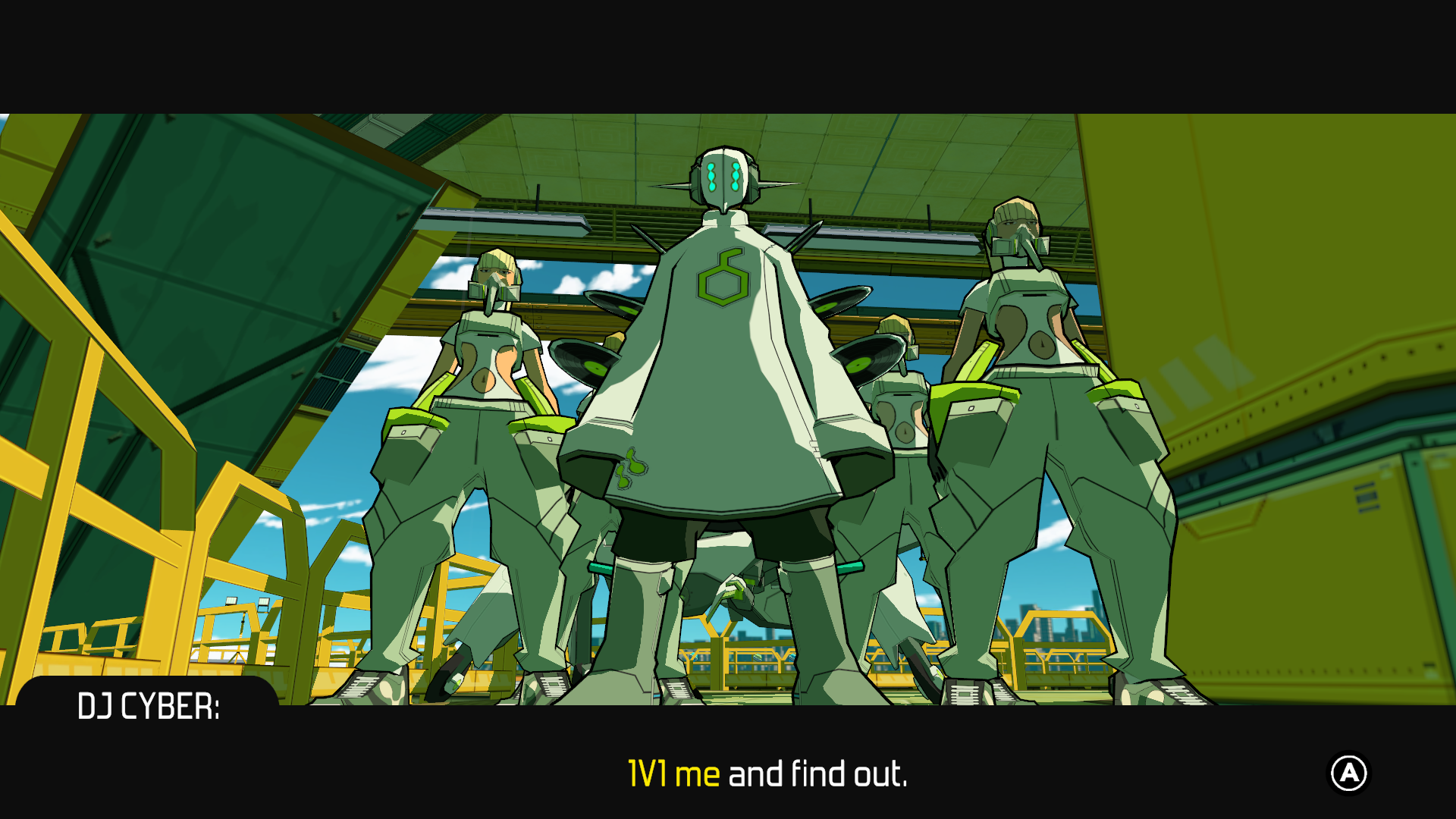
Using the head as a plot device was interesting at first. It reminded me of the anime Durarara! in which one of the main characters, Celty, searches for her missing head. Such was the case of Faux's head until the big reveal that the "All City" quest was one big psyop. While the goal to go "All City" was always the main one, throughout the game, it's told to Red that the head and going "All City" were connected. As it turns out, the head wasn't missing the whole time, but it was connected to a supercomputer. Said supercomputer wants to eliminate all graffiti artists so they could be the uncontested "best tagger" in New Amsterdam.
To remind readers what happened in the beginning, Faux and Tryce were escaping prison when DJ Cyber decapitated Faux's head. Then, he's placed with a new cybernetic head until he finds his original head again. For the entire game, the player is led to believe that the protagonist, the hero, is Faux. It's the first character we play in Bomb Rush Cyberfunk so surely if we connect the head and the body, it's as good as new right? Until the memories of the cybernetic head puts Red into these psychedelic obstacle courses and he sees a person he's never seen before in his dreams. As it turns out, that person is Felix, one of the three best taggers in New Amsterdam.
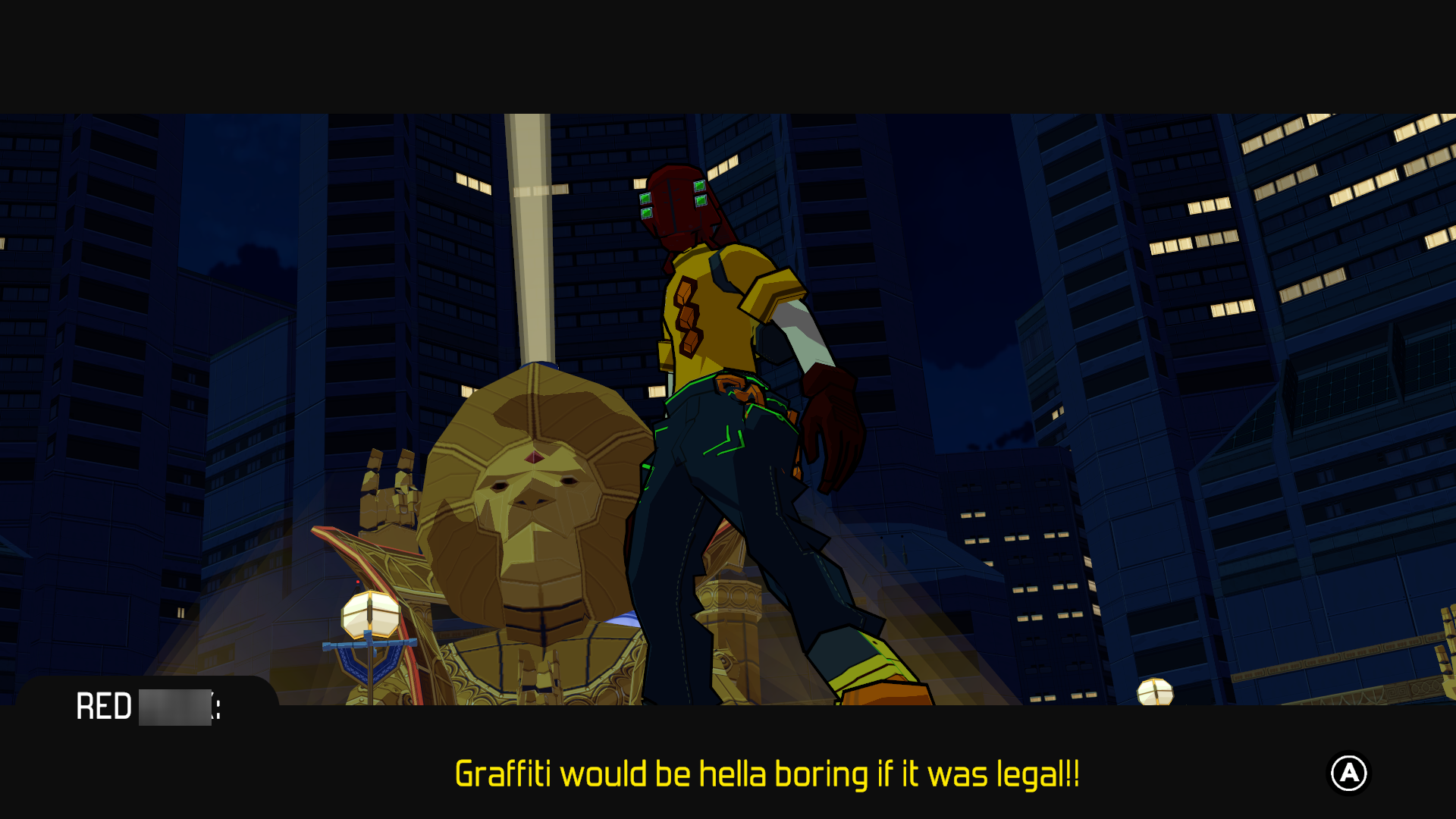
What actually happened was that Felix was closing in on being All City but Faux murdered him to prevent that from happening. However, despite being decapitated, they were able to place Felix's head on Faux's body. In the end, Felix's body and head are rejoined, Faux is defeated, and BRC becomes All City. Oh, and Faux was super powerful as a mind hacker he was able to control and influence the entire police force. No explanation.
The believed intent behind the story is that karma will give to you as you give to others. An eye for an eye, a head for a head. But sometimes you have to lose your head to find yourself when you start from scratch. We believed that Red was a cyborg until we discovered his head was human, blurring the line between tech and---look I'm not going to pretend I completely understand it. But I liked that the plot featured beef with other taggers and it wasn't just "anti-establishment." The rival teams were more than just "another stepping stone," they each had personality and dialogue. Ending spoilers end here.
If the overall rating on Steam is anything to go by, this is shaping up to be Team Reptile's most successful game yet. A sequel is most certainly possible if the ending is anything to go by. But why wait for a potential DLC or sequel when we can focus on what's working for the game and what needs to be improved? One of the things BRC does well is how combos work in this game. A player's combo multiplier increases by hard leaning into corners, wall riding, hitting a quarter pipe, and planting on a lamppost. All of the levels in the game consist of enough corners and things to trick off of to rack up a decently sized multiplier.
It's not so much a challenge to get a high score, but a matter of patience. Dropping the combo at any point means starting from the beginning of the line and building up a multiplier again. Hitting every corner can also cause a snag if you're tricking while attempting to lean into a bank, as you won't be rewarded with a multiplier for doing so.
Tagging every piece of graffiti also offers the same level of patience as once each player takes out a rival gang, they have access to a map of the location. Some of the graffiti tags were in obnoxiously hard-to-spot locations without a map. The little vent behind the couch in the hideout was one such infamous example.
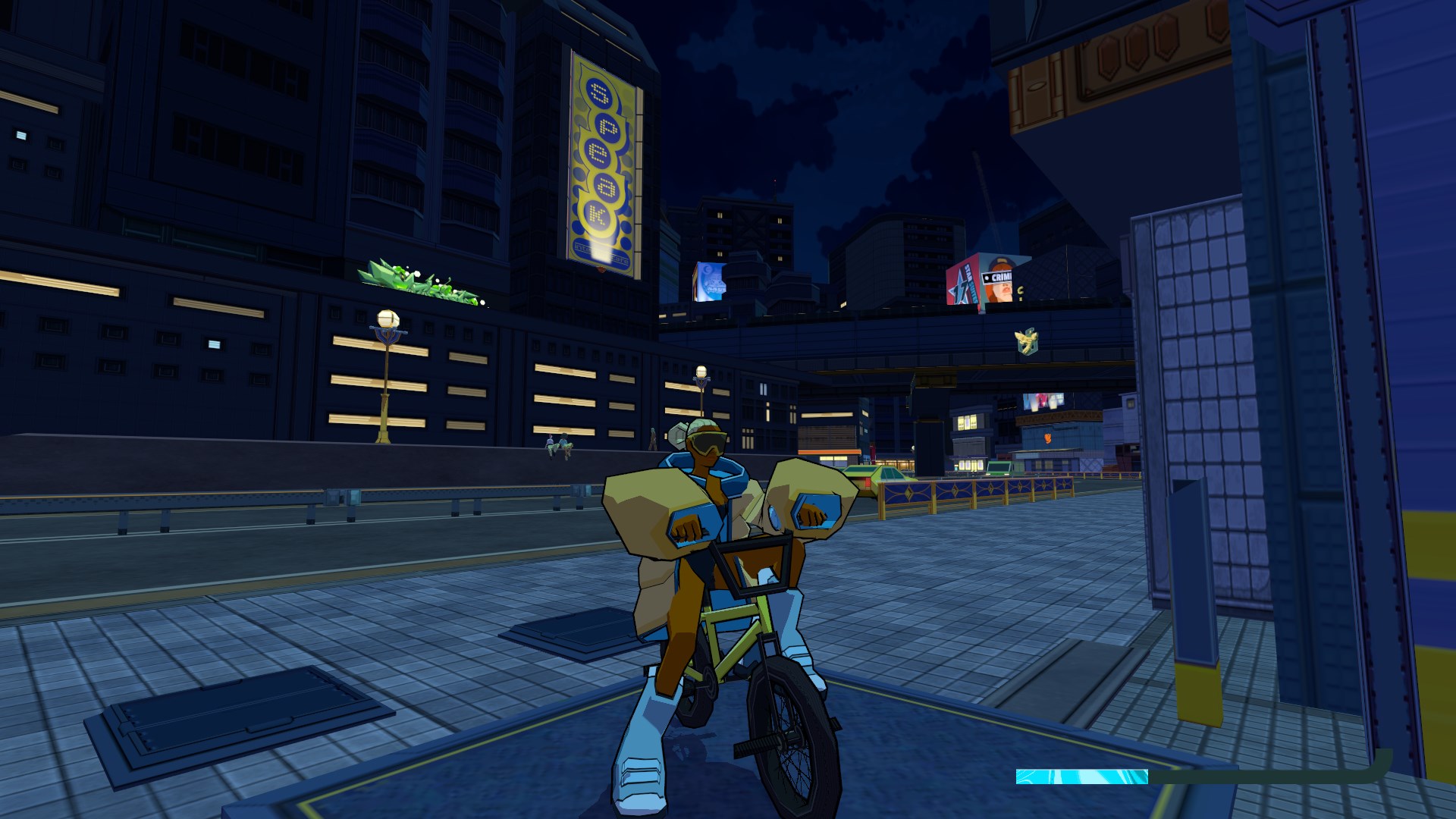
As players earn more Rep by tagging up whatever graffiti remains, they can explore more parts of the levels that were once hidden. There are also many members to recruit to Bomb Rush Cyberfunk during post-game. One of the best things I liked about the end-game credits, without spoilers, is that each image gives players a clue as to where to find the rest of the recruits. Sure enough, arriving at a certain area from the beginning of the game will give players the chance to recruit one such member.
Perhaps the biggest complaint I have about Bomb Rush Cyberfunk is the cops. By the end of the story, they are no longer relevant, or at least they shouldn't be. All they become, aside from a requirement for one of the achievements upon receiving maximum heat levels, is a nuisance. Every time the player gets a new wanted level, the same cutscenes play. Then the enemies become annoying and increasingly hard to avoid. Engaging with enemies automatically dismounts the player from their gear, meaning that a player's combo can be cut short unexpectedly if they aren't paying attention.
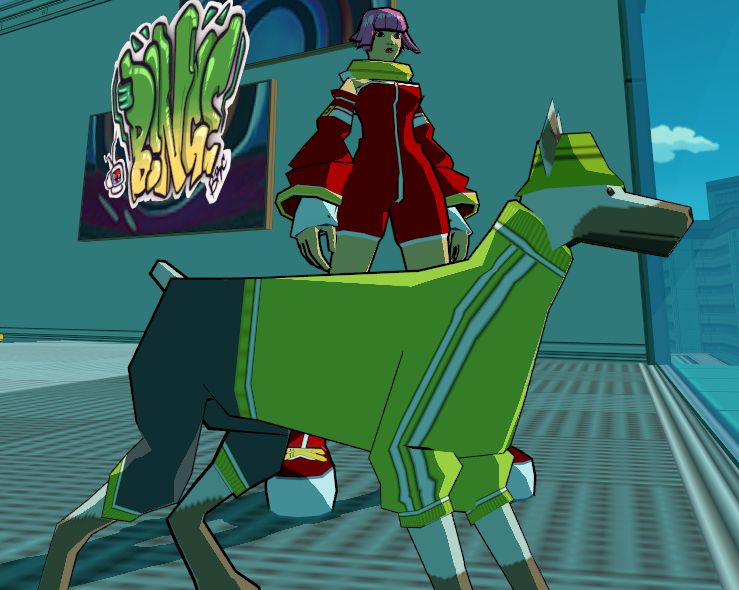
Fortunately, there is a largely dedicated community of modders who are actively improving the game as we speak. Bomb Rush Cyberfunk runs on Unity which means most of its assets can be modified, adjusted, and replaced. Some of the mods are what one would expect from Jet Set Radio Future fans, including skins and model replacement mods referencing Sega's classic futuristic art exhibit. The number of mods that are available right now is far too great to highlight in one post so I plan to make several posts featuring some of my favorites over the next few weeks.
In the end, Bomb Rush Cyberfunk was able to fill that "two-decade-long" itch that I'm surprised very few developers attempted to scratch. There are many games that use comic-style shading in their graphics and pass it off as a "Jet Set Radio" inspired title. The closest game to make an attempt at an "Open world JSR" was Hover, an ambitious futuristic parkour game that I felt was a tad bit off of its mark. Bomb Rush Cyberfunk is simply the first game to get it. This was a game created for Jet Set fans, by Jet Set fans, with the help of those who have experience in the culture related to hip-hop.
While not a perfect game by any stretch, there hasn't been a game that had been perfect in my eyes despite its flaws and blemishes like this one. If you are even remotely a fan of those classic Dreamcast and Xbox titles, chances are you're probably playing this right now. If not, for whatever reason, absolutely pick this game up. It doesn't matter which platform although PC will be the one with the most content thanks to the community.
Needless to say, I can't wait to see what the future holds.
Bomb Rush Cyberfunk is available on the Nintendo Switch and Steam. A PlayStation 4 and Xbox One version is planned for release sometime in September.

